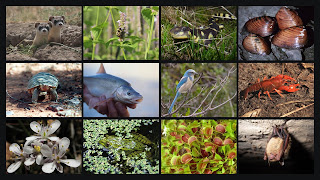Achieving Biodiversity Targets Aptly?
With a 2020 deadline, what insights does it present? Highlighting that we still lack behind in targets relating to sustainable agriculture, pollution, conservation of species, corals, forests, etc and in the light of non-achieving these targets, we are likely to face pandemics like the current COVID-19, wild fires, water crisis and so on.
The report calls for paradigm shift from “business as usual” across a range of human activities but showcases concern to safeguard eco-systems and promote sustainability. In fact, we have partially achieved six targets. With the findings to be discussed at the UN Summit on Biodiversity under the aegis of General Assembly in September, the report is an eye opener for us to introspect biodiversity within the nucleus of sustainable development.
Praising the progress made by India, the report highlights input farming systems, like zero budget natural farming, being scaled up across Karnataka and Andhra Pradesh as a best practice. Further, it has appreciated UN’s support for nature-based solutions, calling it as effective to combat climate change. This is because alongside a rapid phase-out of fossil fuel use, numerous benefits are witnessed for biodiversity and other sustainability goals.
Highlighting a grim situation that more than 10 million tonnes of plastic wastes currently enter our oceans every year and the report has highlighted plastic waste as a significant cause of stress to coral reefs. To mitigate such crisis, interventions shall recognize principles of circular approach to enhance ‘upstream source management' to prevent and mitigate the impacts of Marine Debris on Marine and Coastal Biodiversity and Habitats. The pandemic has opened a window of opportunity to demonstrate transformative changes towards Building Forward Better. Realising 30x30 targets, we need consensus and to forge collective stakeholder partnerships in order to protect at least 30% of planet by 2030, it is expected that biodiversity restoration in an underpinning element to sustain biodiversity and related ecosystems.
India submitted its Sixth National Report (NR6) to the Convention on Biological Diversity (CBD) in 2018 highlighting that ‘with well over 20 percent of its total geographical area under biodiversity conservation, India has exceeded the terrestrial component of 17 percent of Aichi target 11, and 20 percent of corresponding targets relating to areas under biodiversity management. Since ecosystem restoration and realization of cross-goals SDGs 2030 has heightened our commitments to achieve biodiversity related targets, we need nature positive solutions to bridge the challenging gaps and ensure integrated management of biodiversity. India is definitely doing well to meet the Aichi targets and thrusting on biodiversity conservation, but to pace our efforts calls for synchronizing between policies, legislations, technologies, and financial mechanisms alongside participatory governance through a lens of ‘whole-of-biodiversity’ approach.
Scheduled in Kunming, China, in May 2021 to set new targets for biodiversity, will CBD COP15 be a change maker? Don’t wait and watch rather ACTION is needed NOW.
By Dr. Arvind Kumar, President, India Water Foundation




Comments
Post a Comment